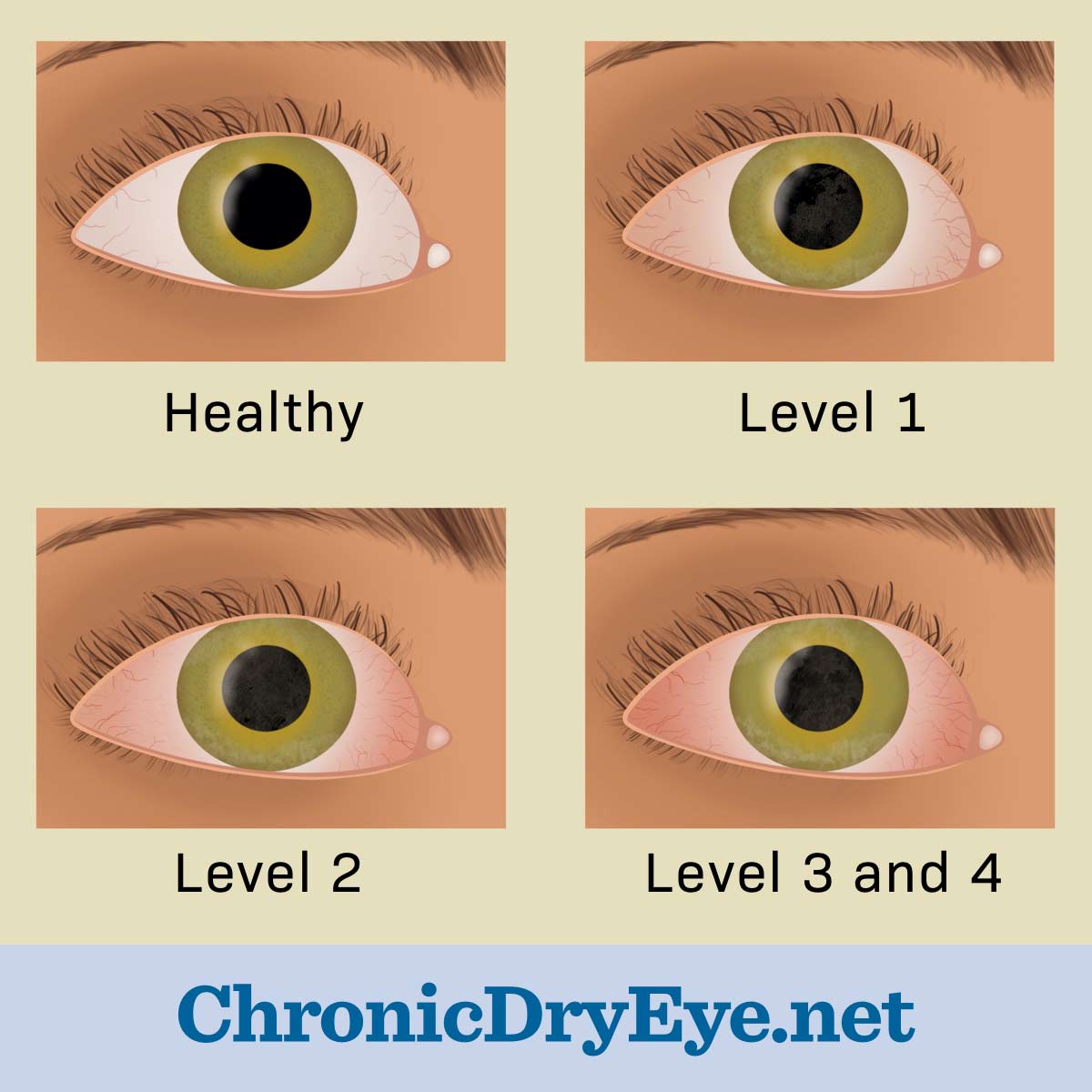Chronic Dry Eye Types and Stages
Reviewed by: HU Medical Review Board | Last updated: May 2021
Chronic dry eye is a disease of the surface of the eye that is characterized by abnormalities of the eye, eyelids, or tear film, resulting in damage and inflammation to the ocular surface. Chronic dry eye may also be called dry eye syndrome (DES) or dry eye disease (DED). Chronic dry eye is usually progressive, meaning it can get worse as time goes on.1
There are different types and stages of dry eye. Understanding these types and stages will help you understand the symptoms you may be experiencing due to dry eye.
Types of dry eye
There are 2 major types of dry eye, evaporative and aqueous deficient.1-3
Evaporative
Evaporative dry eye accounts for 85 to 90 percent of all dry eye cases. In this type of dry eye, tears evaporate quicker than normal. This may be caused by a blockage or problem of the meibomian glands. The meibomian glands normally secrete the oily tear film layer, which helps to prevent tears from evaporating too quickly.1-3
Other causes of evaporative dry eye may include poor blinking, disorders of the eyelid, and environmental factors, such as poor humidity and high wind.1-3
Aqueous deficient
Aqueous deficient dry eye occurs due to a decrease in the number of tears. Tears evaporate at a normal rate, but there are not enough tears to sufficiently lubricate the ocular surface. This is caused by a problem with the lacrimal gland. This is a gland located next to the eye that helps secrete the watery layer of the tear film.1-3
The lacrimal gland may not function correctly in conditions such as Sjogren’s syndrome, a chronic autoimmune disease that affects the lacrimal and salivary glands. This may lead to symptoms of dry eyes and dry mouth.1-3
Levels of dry eye severity
Chronic dry eye is categorized into levels of severity. Disease staging for chronic dry eye is based on several factors, including:1
- Discomfort, severity, and frequency of symptoms
- Visual symptoms
- Irritation of the clear, thin membrane of the eye and upper eyelids
- Irritation on the surface of the eye
- Irritation or dysfunction of the meibomian glands
There are 4 levels of dry eye severity:1,4
- Mild dry eye or Level I: People with this degree of dry eye have mild symptoms, which often occur when they are exposed to environmental stressors such as dry air or high winds. There may be little to no evidence of ocular surface dryness during an eye exam.
- Moderate dry eye or Level II: This level of dry eye is characterized by moderate discomfort with or without environmental stressors. This level might be bothersome enough to limit certain activities. There is usually some evidence of ocular surface dryness or an abnormal tear film during an eye exam.
- Severe dry eye or Level III and IV: Those with this level of dry eye have severe, constant eye irritation and visual disturbances that frequently limit activities such as reading, driving, and other vision tasks. The eye exam may show significant ocular surface dryness, corneal erosion, irregular tear film, and even scarring on the surface of the eye.
Figure 1. Visualizing dry eye severity levels
